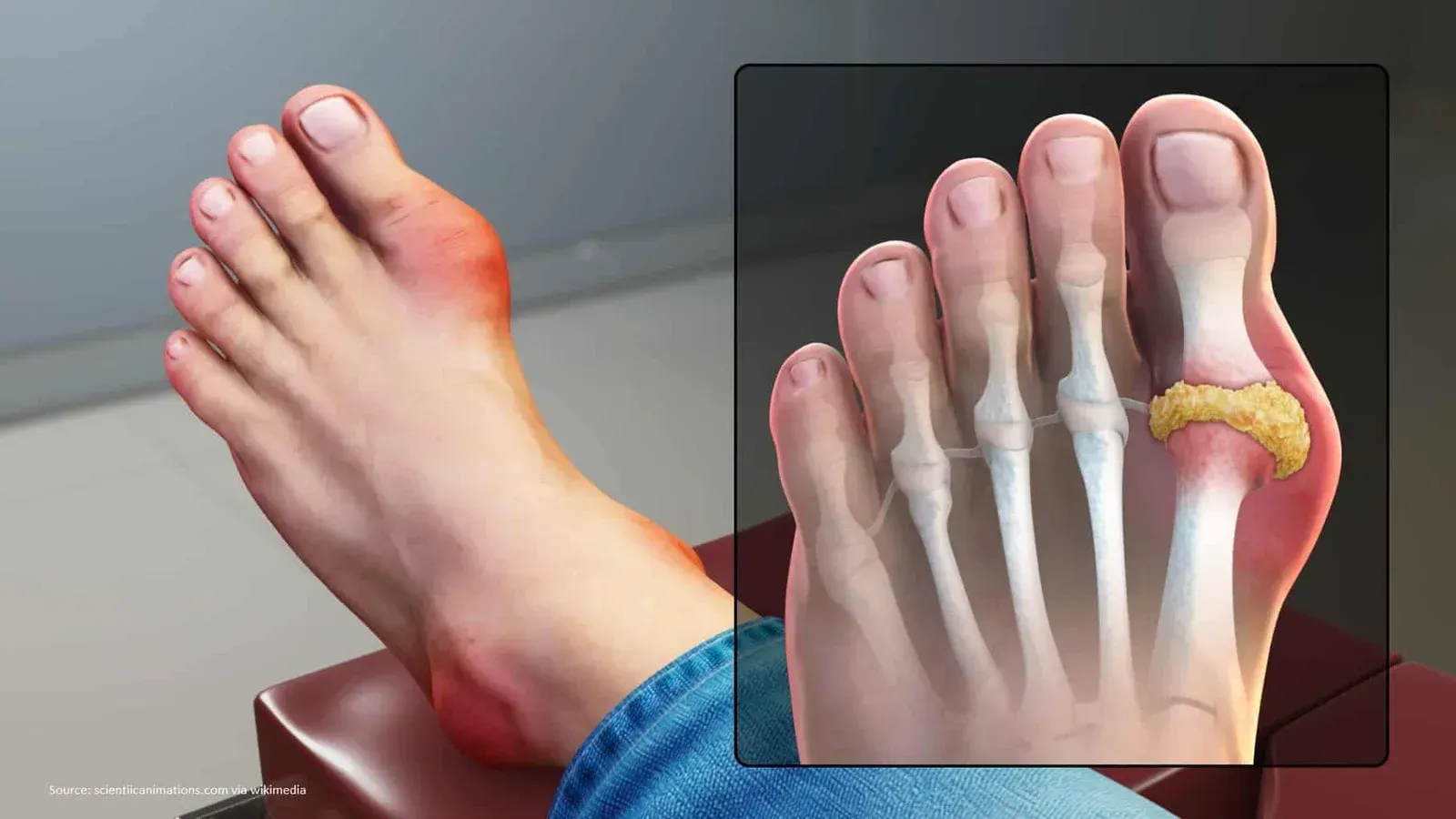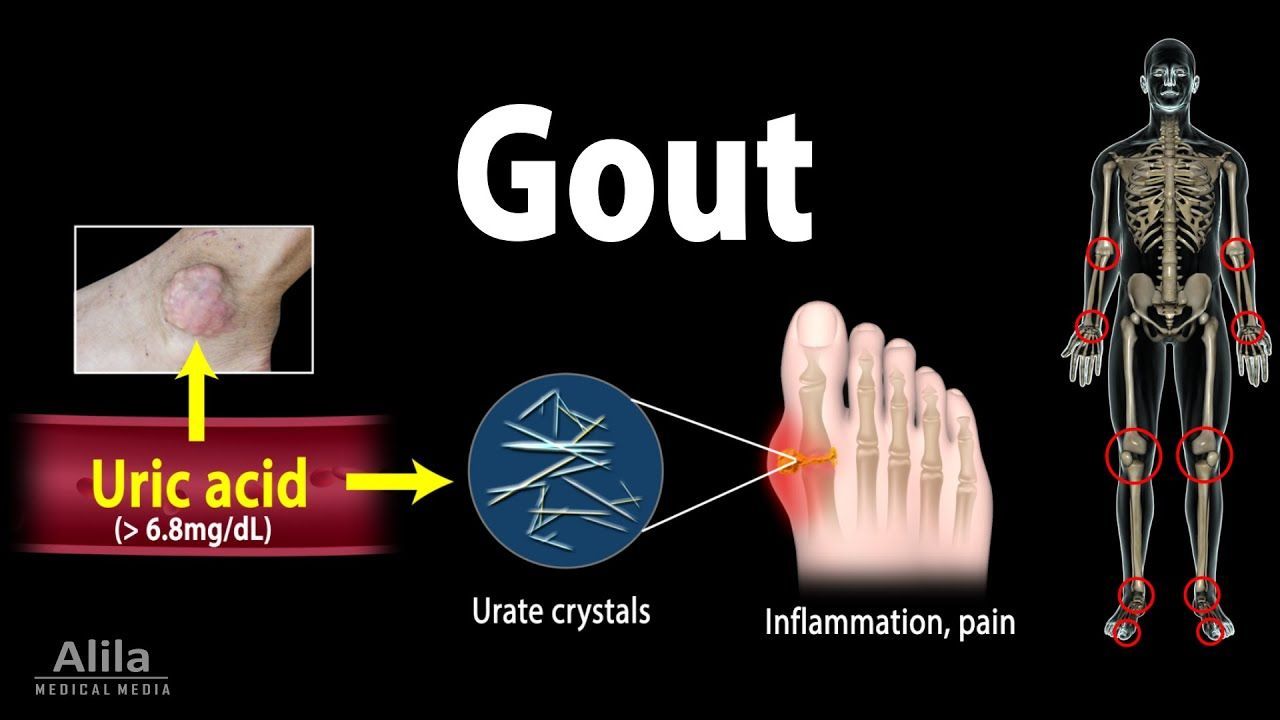The Silent Agony: What You Need to Know About Gout

Gout is a chronic, often painful condition caused by the accumulation of uric acid crystals in joints, leading to inflammation. Understanding the condition in more detail can help manage it effectively. Here's a deeper dive:
What is Uric Acid?
Uric acid is a natural substance produced by the breakdown of purines, which are found in many foods and also occur naturally in the body. Normally, uric acid dissolves in the blood and passes through the kidneys to be excreted in urine. However, if the body produces too much uric acid or the kidneys can't eliminate enough, the levels rise, leading to a condition known as hyperuricemia.
How Uric Acid Leads to Gout:
- Hyperuricemia: High uric acid levels in the blood don’t usually cause problems on their own, but over time, they can lead to the formation of uric acid crystals.
- Crystallization: Uric acid crystallizes into needle-like structures in cooler parts of the body (typically joints). These crystals are hard, sharp, and irritate the joint tissues, leading to painful attacks.
Inflammation: The body’s immune system reacts to the presence of uric acid crystals, triggering an inflammatory response. White blood cells rush to the affected joint, trying to remove the crystals, which results in severe pain, swelling, and redness.

Symptoms in Detail:
- Sudden Onset of Pain: The pain often starts without warning, usually at night or early morning. It’s described as intense and can be so severe that even light pressure, like a bedsheet, can be unbearable.
- Big Toe Attack (Podagra): While gout can affect any joint, it commonly strikes the big toe (first metatarsophalangeal joint). Other frequently affected joints include:
- Ankles
- Knees
- Elbows
- Wrists
- Fingers
- Flares and Remission: Gout often occurs in flare-ups, with periods of intense symptoms followed by stretches where the person has no symptoms. Without proper management, flare-ups can become more frequent, last longer, and affect more joints.
- Tophi Formation: In chronic gout, tophi—large lumps of uric acid crystals—can form under the skin around joints, in the ear cartilage, or even in organs such as the kidneys. They appear as firm nodules and can cause joint deformity over time.
- Kidney Stones: High uric acid levels can also lead to the formation of uric acid kidney stones, causing additional health problems such as kidney damage.
What Triggers Gout?
Certain factors can trigger a gout attack by either increasing uric acid levels or causing the uric acid to crystallize:
- Dietary Factors:
- Foods high in purines: These include red meat, organ meats (liver, kidney), and seafood like sardines and anchovies.
- Alcohol: Beer and spirits, in particular, raise uric acid levels by accelerating its production and inhibiting its excretion.
- Sugary Beverages: Soft drinks sweetened with fructose can contribute to higher uric acid levels.
- Dehydration: Lack of water can concentrate uric acid in the blood, increasing the likelihood of crystallization.
- Injury or Surgery: Physical trauma to a joint or surgery can also precipitate an attack by releasing stored uric acid into the bloodstream.
- Other Health Conditions: Obesity, high blood pressure, diabetes, metabolic syndrome, and kidney disease are linked to higher uric acid levels.
- Certain Medications:
- Diuretics (water pills) increase uric acid levels.
- Low-dose aspirin can raise uric acid by decreasing its excretion through the kidneys.
- Immunosuppressants like cyclosporine can increase uric acid levels, making it more likely to crystallize.
Long-Term Management of Gout:
- Medications for Gout Control:
- Allopurinol: This drug works by reducing the production of uric acid. It’s often prescribed for people with frequent or severe gout attacks.
- Febuxostat: Like allopurinol, it also inhibits uric acid production but may be better tolerated in some patients.
- Probenecid: This helps the kidneys excrete more uric acid, lowering its levels in the blood.
- Lifestyle Adjustments:
- Dietary Changes: Avoiding purine-rich foods (such as red meat, organ meats, and seafood), limiting alcohol consumption (especially beer), and reducing intake of sugary foods and beverages can help lower uric acid levels.
- Weight Management: Maintaining a healthy weight reduces the risk of gout flare-ups. Obesity is a significant risk factor for gout because extra fat tissue causes the body to produce more uric acid and inhibits the kidneys’ ability to eliminate it.
- Stay Hydrated: Drinking plenty of water helps dilute uric acid in the blood, reducing the risk of crystal formation.
- Exercise: Regular physical activity can help maintain a healthy weight and reduce the risk of gout attacks, though intense exercise or injury to joints can sometimes trigger an attack.
- Monitoring Uric Acid Levels: Regular blood tests to measure uric acid levels are important for those at risk of or already diagnosed with gout. Doctors often aim to keep uric acid levels below 6.0 mg/dL to prevent flare-ups and complications.
Preventing Future Attacks:
- Adherence to Medication: Taking medications regularly is crucial for preventing future gout attacks. If left untreated, gout can become a chronic condition with joint damage and deformities over time.
- Reduce Alcohol and Fructose Intake: Limiting alcohol consumption, especially beer, and avoiding sugary beverages can help reduce the risk of uric acid buildup.
- Healthy Diet: Following a low-purine diet can help minimize the frequency and severity of attacks. Some gout-friendly foods include:
- Low-fat dairy products
- Whole grains
- Vegetables (except for purine-rich ones like spinach, asparagus, and mushrooms, but in moderation)
- Coffee (some studies suggest that coffee may reduce gout risk)
Complications of Untreated Gout:
- Chronic Gout: If gout is not treated properly, it can lead to chronic tophaceous gout, where large urate deposits accumulate in joints, cartilage, and bones. This condition can cause joint damage and permanent deformities.
- Kidney Problems: Untreated gout increases the risk of developing kidney stones, which can lead to kidney damage over time.
Key Takeaways:
- Gout is a form of arthritis caused by elevated uric acid levels.
- Painful flare-ups are often sudden, affecting the big toe but can involve other joints.
- Treatment includes medications to reduce inflammation during attacks and long-term medication to control uric acid levels.
- Lifestyle changes like diet, hydration, and weight management are essential in managing gout and preventing future flare-ups.
Early diagnosis and proper management can help people with gout lead a pain-free and active life while minimizing the risk of permanent joint damage.
share this
Related Articles
Related Articles
STAY UP TO DATE
GET PATH'S LATEST
Receive bi-weekly updates from the church, and get a heads up on upcoming events.
Contact Us








